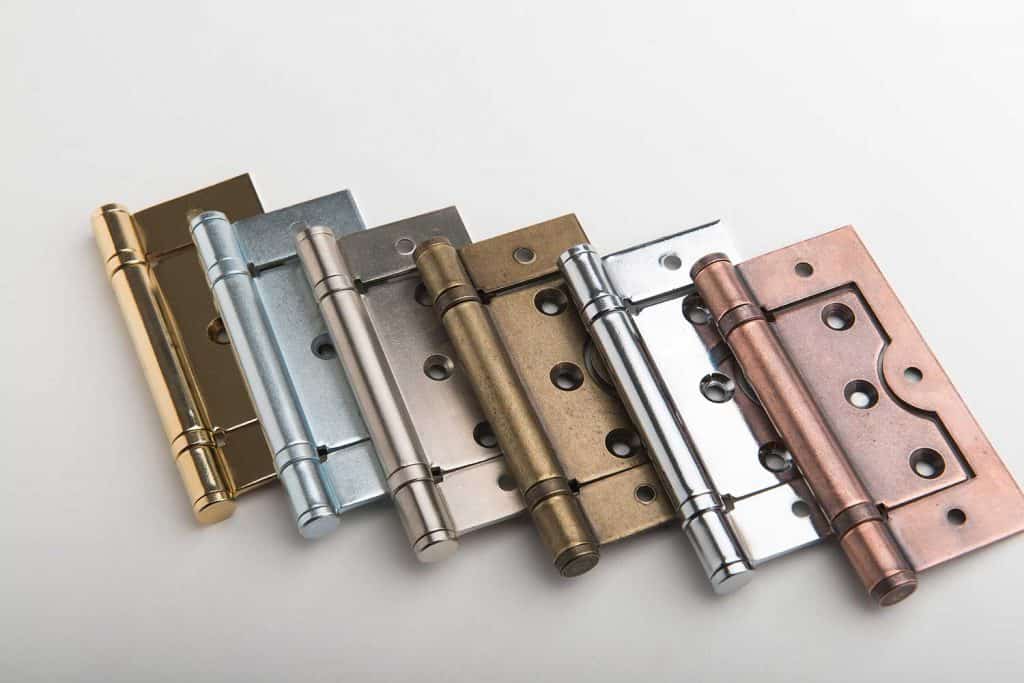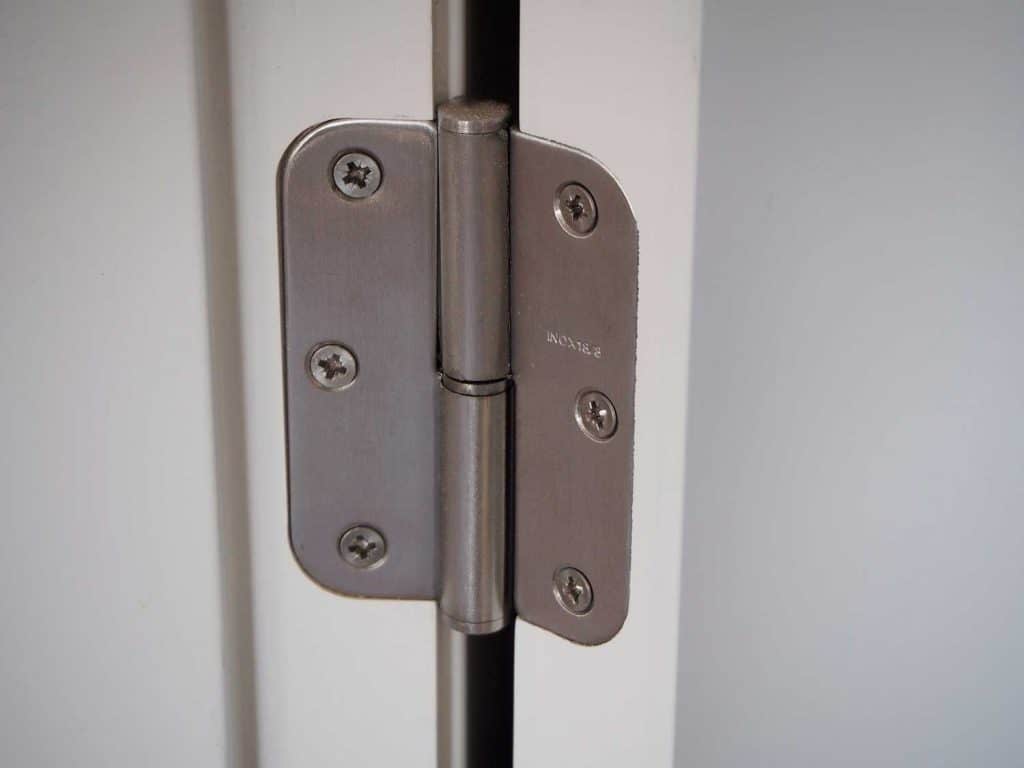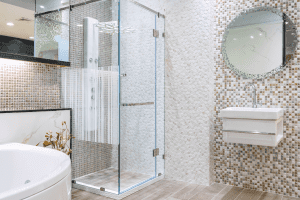Are you thinking of replacing your old interior door with a new one but can't seem to figure out how many hinges you'll need? It might be frustrating at times because different doors may have different numbers of hinges installed. Please don't be worried because our team is here to guide you. We've compiled all of the necessary information and some suggestions for the best hinges for your home.
As a general guideline, depending on the height and thickness of the door in question, most interior doors require 2 to 3 inches of clearance. To provide general stability, you'll need 3 hinges that should be fitted at least every 30 inches of the height of your inside door.
Hinges might seem simple, but there are still things that you might not know we know. We are still not finished giving you the best, so continue reading to educate yourself more about hinges and how they can save your life in some tight situations.

Why Are There 3 Hinges On An Internal Door?
Hinges are the centerpiece for opening and closing a door. They are also the mechanism that attaches the door to its frame. Hinges are one of the crucial components of the framework, whether you're changing an existing door or installing a new one.
Although they may appear the same, hinges come in various shapes and sizes to suit multiple purposes.
As a basic guideline, a hinge should be installed for every 30 inches of the door's height. As with most interior doors, up to three hinges are required, depending on the height and thickness of the door in consideration.
What Are The Different Types Of Door Hinges?

Although hinges are primarily hidden from sight, they play a crucial role in our homes. Without hinges, doors would never be developed. Although they don't contribute to the overall appearance of your home, they are essential pieces of hardware.
The best hinges for your project will depend on where they will be installed and the final finish you want to achieve. Take a look at these examples of door hinges below:
Butt Hinge
Both in-home and industrial uses, this is the most popular style of hinge. For lightweight interior doors, builders typically use these basic butt hinges because of their cost-effectiveness.
The two leaves are mortised into the door and frame, enabling them to butt up against the other (which is where the name butt hinge comes from).
Check out the Amazon Basics square matte black butt hinge on Amazon.
Rising Butt Hinge
The rising butt hinge is one of three types of conventional mortise hinges. It elevates the door by 12 inches, allowing it to rise slightly off the floor as it is opened. It is commonly used to prevent the door from scratching against the carpet or uneven surfaces. It resembles a standard hinge when closed.
Check out this Auto-plaza Stainless Steel Rising Butt Hinge on Amazon.
Ball Bearing Hinge
The pre-lubricated bearings of a ball bearing hinge provide for smoother, longer-lasting, and more robust operation due to reduced strain and wear. Thanks to its ball bearings, it can effortlessly handle even heavy-duty solid wood doors.
Check out these KS Hardware stainless steel ball-bearing hinges on Amazon.
Spring Loaded Hinge
Spring-loaded hinges utilize "spring tension" to revert the door to its closed position once it has been opened. Any application that requires a self-closing door should use this sort of self-closing hinge.
Check this Amazon Basics high-rated self-closing hinge on Amazon.
Continuous Hinge
A continuous hinge is distinguished by its extensive length, which equally distributes weight across the hinge's portions, decreasing stress and providing more significant support.
In general, continuous hinges are 1 to 6 inches broad and up to 6 feet long or more in most cases. It's the ideal hinge for toy boxes and storage benches, among other things.
Check out this XIALUO marine-grade continuous hinge on Amazon.
How Much Weight Can A Door Hinge Hold?

Load capacity is an essential factor to consider when selecting the appropriate door hinges for your needs. Although manufacturers can undoubtedly give you that information, you still need to conduct additional research.
You must consider both the door weight and the frequency of use while choosing the correct hinge. Consider frequency, which is essentially a measurement of how frequently it is being opened and closed or how much traffic passes through it.
- Low frequency - The door is being used more or less 10 times a day.
- Medium frequency - The door is exposed to frequent use about 24 times a day.
- High frequency - The door is exposed to increased traffic more than 25 times a day and most likely gets slammed against the wall.
We may now combine the frequency with the door's weight to calculate the necessary hinge type.
- Standard Duty Hinge - used on low to medium frequency doors with the weight of 200 pounds.
- Heavy Duty Hinge - used on high frequency door up to 200 pounds or medium frequency door up to 400 pounds.
- Heavy Duty Hinge (LL) - used on low frequency doors weighing one thousand pounds.
Knowing what type of hinge to use is essential for prolonging your hinge's and door's life span over the years.
What Are The Best Hinges For Internal Doors?

While it's essential to consider the doors that lead into your home, it is also important to consider the quality of the hinge that will hold on to your precious door. It's critical that you understand the various types of interior door hinges so that you can make the best decision for your needs.
Plain Bearing Butt Hinge
The plain bearing butt hinge is a popular choice for residential and industrial doors due to its straightforward design.
A plain bearing hinge has a barrel made up of many sections held together by a pin. It supports lightweight to mediumweight doors and is mostly used indoors.
You might want to check this Emtek plain bearing hinge on Amazon.
Concealed Hinge
Concealed hinges don't interfere with your interior door's elegance and exquisite look because they're designed to be hidden. If you prefer a cleaner look with no parts of the hinge peeking out, choose concealed hinges.
Since they are not exposed, they provide a level of security that traditional hinges do not.
Check this heavy-duty Alamic concealed door hinge on Amazon.
What Size Hinges For Internal Doors
Interior door hinges are lighter in weight and come in a smaller variety of sizes and finishes. They usually come in three sizes: 3′′ x 3′′, 3.5′′ x 3.5′′, and 4′′ x 4′′. These hinge sizes are measured in inches and are great for doors that aren't too heavy.
What Are The Requirements For Hinges On Fire-Rated Doors?
As stated in the decoded NFPA 80 regulation, fire door assemblies must have an adequate number of hinges. A door with a height of up to 60 inches should have two hinges. Doors taller than 60 inches must have one additional hinge for every 30 inches of door height.
Fire-rated hinges should also have a high melting point. They should easily sustain about 1,472 degrees Fahrenheit (800 degrees Celsius) of heat and still operate to open the fire door.
Why Do We Need Fire-Rated Hinges?
To begin with, basic hardware hinges with no fire rating are vulnerable to fire damage. An ordinary hinge subjected to extreme heat can soon become crippled and deformed, preventing access and jeopardizing the safety of anybody inside and any rescue that may arrive.
Fire-rated doors are designed to keep you safe, prevent the spread of smoke and flames, and reduce damage to the property. These doors are an important part of any buildings or household's passive fire safety measures.
Parts like hinges are essential in ensuring that these fire doors will never fail to operate in an emergency.
In a real scenario, a fire door should hold fire for at least 30 minutes while being exposed to temperatures as high as 1,832 degrees Fahrenheit (1000 degrees Celsius). In this case, the fire door will sustain charring and warping.
Without fire-rated hinges, fire doors will not operate to their maximum potential, thus jeopardizing the survivability of people stuck inside and any rescue that will arrive.
In Closing
Although they may appear to be the same, hinges come in various shapes and sizes to suit various purposes. It's just as vital to pick the right hinge as picking the right knob and lockset for your door.
A conventional rule of thumb is that hinges should be installed at least every 30 inches of the door's height. This will give your door enough stability to allow for seamless functioning.
Now that you have some insight about door hinges, do check out our other posts on oak doors below, especially as oak doors will be a good fit for your beautiful interior.










